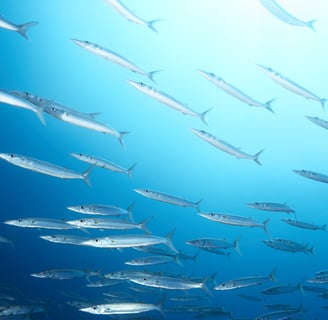Ultimate Guide to Bonito Fishing in Madeira
A complete guide to fishing bonito in Madeira: techniques, timing, bait, and culinary tips
FISHING TECHNIQUES
Shore Fishing Madeira
Ultimate Guide to Bonito Fishing in Madeira
Madeira, a picturesque archipelago in the Atlantic, is renowned for its diverse marine life, and one of the most prized catches around its coastlines is the bonito (Sarda sarda), also known locally as serralho. This guide will delve into everything you need to know about fishing for bonito, from its reproduction patterns and the best times to fish, to effective techniques and its culinary appeal.
Bonito Overview
The bonito (Sarda sarda) belongs to the Scombridae family, which also includes other powerful and fast-swimming fish such as tuna. Bonito are agile predators that typically feed on a variety of small fish, including flying fish and other small pelagic species, as well as squid. These fish share similar characteristics with tuna, including a streamlined body and large fins, making them exceptionally fast and well-adapted to hunting in open waters. Bonito are highly prized for their strength and speed, making them a thrilling catch for shore anglers. They're often spotted hunting smaller fish in the waters near the island.
Reproduction and Seasonality
Bonito in Madeira generally reproduce in the warmer months, with spawning occurring from May to August. During this period, they move into warmer, more productive waters to spawn. These fish are pelagic spawners, meaning that their eggs float freely in the water, where they develop until they hatch. The best time to target bonito, however, is just before and during the warmer months of late spring and early summer, when they are abundant around the island.
Fishing Techniques for Bonito
Bonito are known for their aggressive nature and their love for high-speed lures, making them a prime target for spinning. Spinning for bonito is a thrilling experience, and it’s one that demands speed, precision, and the right equipment.
Popper Fishing
During summer, one of the most effective techniques is using a popper. Bonito are attracted to the splash and commotion created by poppers on the water’s surface, especially when they’re chasing schools of bait fish. The best time for popper fishing is early in the morning or late in the afternoon when bonito are actively hunting and closer to the surface. The key is to retrieve the popper at a steady pace to simulate the movement of injured or fleeing bait fish.
Jigs and Lures
In addition to poppers, jigs and lures are also effective. Bonito are highly responsive to fast-moving artificial lures, especially during feeding frenzies. Silver, yellow or blue lures are particularly effective as they mimic the appearance of small bait-fish. However, when schools of sardines or anchovies are particularly abundant, the bonito can become less responsive to artificial lures.
Live Baiting
When sardines or anchovies are in high abundance an occurrence known to older, seasoned fishermen as the “overpopulation” of these species the bonito become less aggressive towards artificial lures. During this time, the best approach is to use live bait. Live sardines are perfect for enticing a bonito when it’s less likely to strike at a lure. This method can be especially successful in the summer, but also towards the end of winter, when schools of sardines tend to move closer to the shore. The timing can be unpredictable in Madeira, as sardine schools can vary in their movement patterns. In some cases, even dead sardines, including frozen ones purchased from stores, can prove effective.
Best Times for Spinning & Fishing Bonito in Madeira
Bonito are a highly migratory species, so their presence around Madeira varies. However, the best months to target bonito are generally between May and September, particularly when water temperatures are optimal for their feeding and spawning cycles.
The peak of bonito activity is typically in late spring to early summer, when the seas around Madeira are rich with baitfish. Early mornings and late afternoons are the best times to fish, as bonito tend to be most active during these periods. If you are fishing with poppers, you’ll likely see the most success just after sunrise or just before sunset when the bonito are closer to the surface.
Culinary Appeal of Bonito
Bonito is not only a thrilling catch, but it is also highly valued for its flavour. While it’s not typically as oily as other mackerel species, bonito has firm, white flesh and a rich, savoury taste. It’s often used in a variety of dishes, including grilled, seared, or in a ceviche. In Madeira, you’ll find bonito prepared in local recipes, such as in a traditional Madeiran fish stew or grilled with aromatic herbs. For us at Shore Fishing Madeira, a bonito tartar with mango and avocado is the perfect way to enjoy this delicious fish, offering a fresh and vibrant twist on this prized catch.
Bonito Regulations
In the Autonomous Region of Madeira, the bonito (Sarda sarda), also known as the northern bonito, is a commonly found species in its waters. There are no specific regulations identified that restrict its capture in Madeira. However, it is essential to practice responsible and sustainable fishing to preserve marine resources for future generations.
Conclusion
Fishing for bonito in Madeira is an experience like no other. From the adrenaline-pumping moments of chasing them with poppers in the summer to the quiet patience required when live baiting, this fish offers something for every angler. Whether you are a seasoned pro or a first-time fisherman, the waters around Madeira provide an opportunity for a memorable catch.
Remember, the key to success is understanding the fish's patterns, using the right gear, and respecting the seasonal changes in the water. Get ready for an unforgettable adventure on the beautiful shores of Madeira!
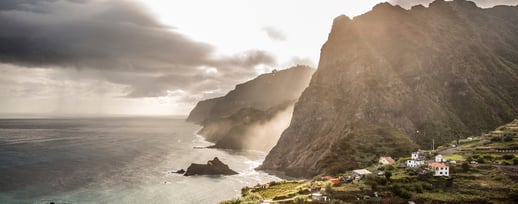

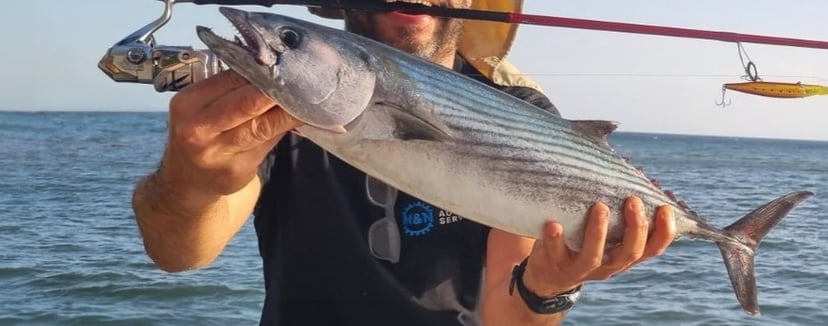

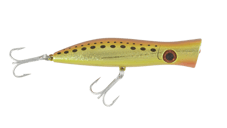




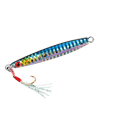
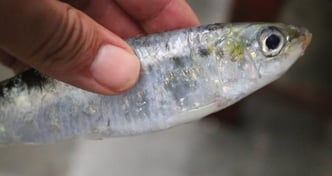




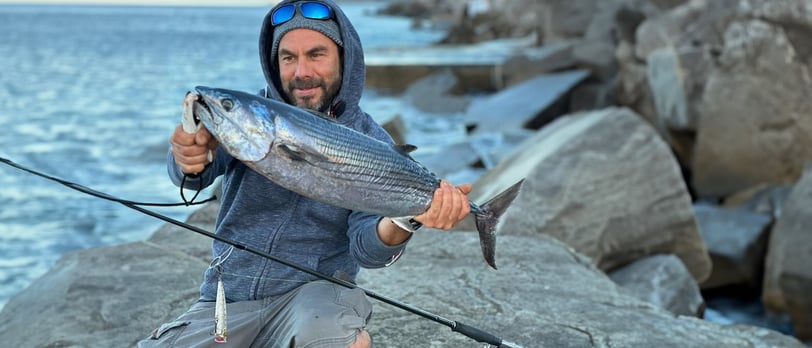

Medium Spinning | 20gr/60gr 2.70mts Barros Striker | 0.20mm Braid | Flourocarbon 0.45mm Leader | FGknot | 41Gr sinking Yellow Minnow | Shimano Stradic 4000



